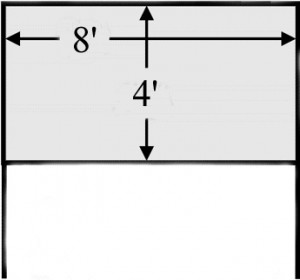guidelines
GUIDELINES FOR WRITING NEEDS ASSESSMENT & LEARNING OBJECTIVES (click here for pdf file)
Needs Assessment:
- The Needs Assessment is reviewed by the Program Committee to help evaluate the quality of your presentation proposal and gauge the potential audience interest.
- A needs assessment should clearly and concisely demonstrate that a relevant problem or need exists and include supporting data, which may consist of demographics, economic health, results from surveys, or published data.1
- A needs assessment is a systematic process of gathering information that is appropriate and sufficient to develop an effective educational program that will address the groups’ needs and wants (gap).
A gap analysis can be defined as the determination of the difference between current knowledge/practices (what we are doing) and current evidence-based practices (what we should be doing). This may include new technologies, diagnosis or treatments, current research, legislative or regulatory changes, current research or literature, and clinical guidelines.2
Learning Objectives:
- The Learning Objectives are reviewed by the Program Committee to help evaluate the quality of your presentation proposal and gauge the potential audience interest.
- Accepted presentations will have the learning objectives evaluated by audience participants to rate the effectiveness of the learning objectives.
- Learning objectives state what the participant should know or be able to do at the end of an educational activity. They should be realistic, measurable, obtainable, and define desired outcomes.3 Avoid the use of vague verbs that are hard to measure like: understand, know, appreciate, become familiar, be aware of, and perceive. These verbs are about mental processes and one cannot realistically provide evidence that can be measured.4
The following words are some examples of what can be used to develop measurable educational learning objectives:3
| Cognitive Domain | Psychomotor Domain | Interpersonal Domain | Affective Domain |
| Cite | Calculate | Advocate | Attend to |
| Classify | Conduct | Criticize | Determine |
| Construct | Connect | Defend | Develop |
| Compare | Construct | Express | Display |
| Defend | Demonstrate | Generalize | Exemplify |
| Define | Diagnose | Inform | Listen |
| Differentiate | Form | Object | Maintain |
| Discuss | Maintain | Offer | Participate |
| Evaluate | Operate | Produce | Recognize |
| Explain | Perform | Propose | |
| Express | Produce | Reflect | |
| Identify | Speak | Request | |
| Illustrate | Suggest | ||
| List | Summarize | ||
| Measure | |||
| Quote | |||
| State (or Restate) | |||
| Tabulate |
References:
- Department of Medical Education, Needs Assessment Guidelines, Centocor Ortho Biotech Services LLC (2017)
- Pitman, NJ, A representation: Incorporating a needs assessment and gap analysis into the educational design, Anthony J. Jannetti, Inc. (2012)
- NAPNAP, Developing Learning Outcomes/ Educational Objectives, NAPNAP CE Guidelines (2019)
- Language & Learning Advisers, Writing Learning Objectives for Nursing, Learning & Teaching Unit, University of South Australia, (2012)
GUIDELINES FOR ORAL PRESENTATION SLIDES (click here for pdf file)
Formatting:
- Presentations must be submitted as a PowerPoint or Keynote file (PDF files not accepted).
- Use a neutral design background for slides (patterns, graphics or dark backgrounds can cause legibility problems when presentations are put into handout format).
- Use at least 36 point for title, 24 point for body text and 12 point for footnote text.
Content – Each presentation must include three slides at the beginning:
- Slide 1 – Title
- Slide 2 – Financial and/or Label Disclosure Statement
- Slide 3 – Learning Objectives (list three learning objectives)
Commercial Bias:
- The Accreditation Agency reviews each presentation to assure there is no commercial bias.
- Generic names must be used throughout the educational activity. If a brand/trade name is used in print, the generic name must also be included in parentheses.
- If you include pictures of any medical devices or brand name products in your presentation, the company logo and brand name must be obscured. (You can insert an appropriately colored rectangle on to the picture in the PowerPoint slide)
GUIDELINES FOR POSTER PRESENTATION CONTENT & DISPLAY (click here for pdf file)
Content Review:
- Poster content must be submitted as a PowerPoint, Keynote or PDF file.
- Include any text, pictures, charts/graphs that will be on your poster.
Commercial Bias:
- The Accreditation Agency reviews each presentation to assure there is no commercial bias.
- Generic names must be used throughout the educational activity. If a brand/trade name is used in print, the generic name must also be included in parentheses.
- If you include pictures of any medical devices or brand name products in your presentation, the company logo and brand name must be obscured. (You can insert an appropriately colored rectangle on to the picture in the PowerPoint slide)
Display Specifications:
- All boards are double sided
- 2 posters per board (1 each side) maximum
- Boards will be pre-numbered according to assigned poster numbers
- Maximum size of the poster is 8′ horizontal x 4′ vertical (unless alternate dimensions have been approved by the NNPS Program Committee)
- Pins or velcro are recommended for attachment

Email Notice Sign-up
Phone: (800) 996-3233 or (303) 690-3233
Fax: (888) 996-3296 or (303) 690-3278
E-mail: [email protected]
© National Nurse Practitioner Symposium
4255 S Buckley Rd #118
Aurora, CO 80013